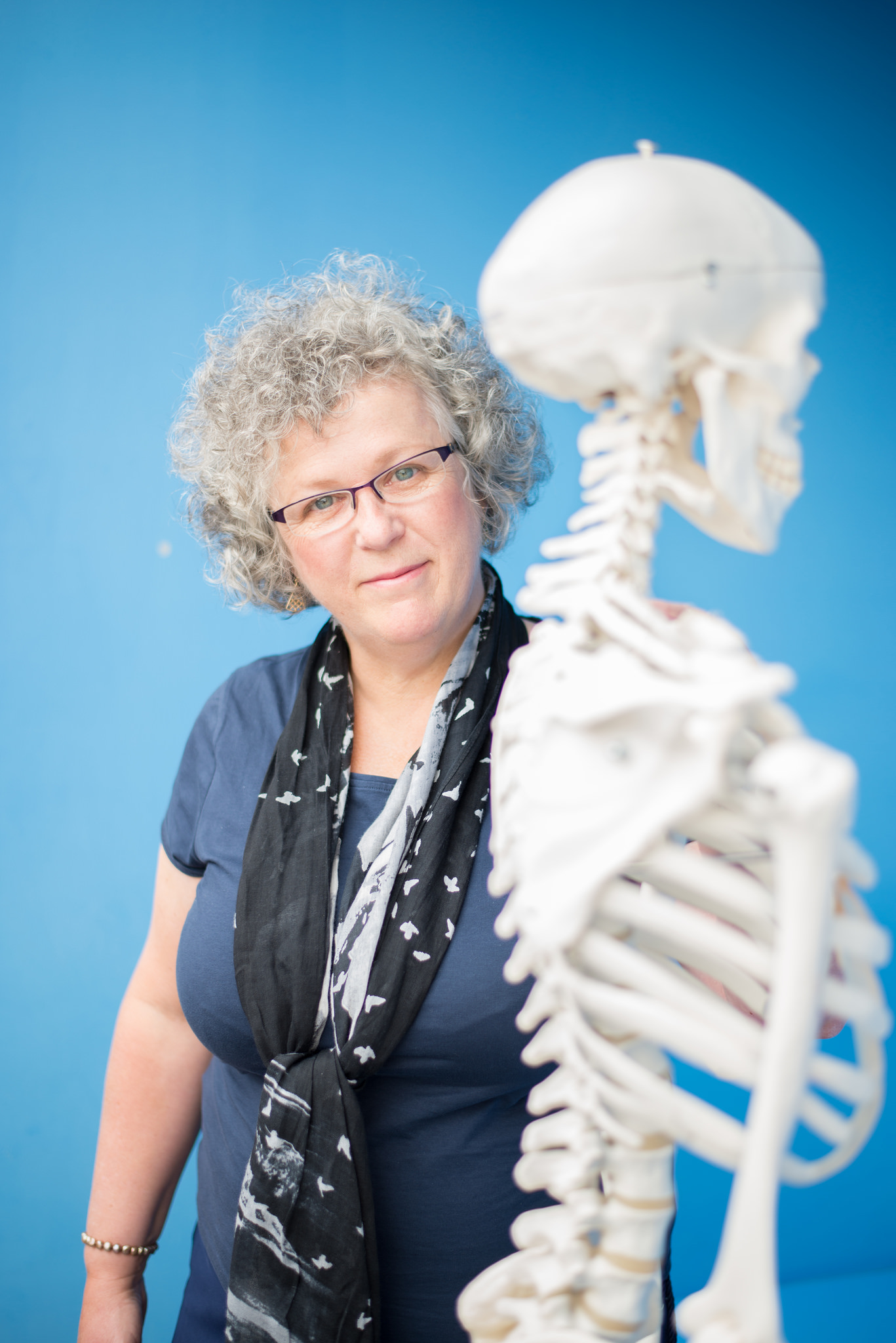QMU research improves person-centred care for patients with osteoporosis
A new university report highlights how frontline healthcare staff can improve care for people with osteoporosis who are in hospital.
The report states that although fractures relating to the moving and handling of patients in acute care are uncommon, frontline healthcare staff all need to have greater knowledge of the risk of fracture in people with osteoporosis.
Osteoporosis is a ‘silent disease’ where there are few outward signs or symptoms until it is well advanced or fractures are sustained. It occurs when bone loss is greater than bone production and thinning of bone structure causes them to become weak and easily broken. According to the National Osteoporosis Society one in two women, and one in five men, over the age of fifty will break a bone in their remaining lifetime and will do so mainly as a result of poor bone health.
Two hundred and fifty thousand people in Scotland have osteoporosis. The prevalence in Scotland is high due to deficiency of vitamin D, essential for bone health, which is obtained predominately from exposure to sunshine.
The report, states that healthcare staff, although knowledgeable about the associated increased risk of fracture, tended to underestimate osteoporosis prevalence in the older population and did not tend to distinguish between normal moving and handling care, and moving and handling in patients with osteoporosis.
Dr Margaret Smith, who leads the Lydia Osteoporosis Project at Queen Margaret University, explained: “Moving and handling of people with osteoporosis can be complex and there has been little research done in this area. Whilst some people with advanced spinal osteoporosis may present with curvature of the back associated with the disease, in the majority of cases there are no outward signs. Frontline staff may not be aware that a patient, who is in hospital for reasons other than this, actually has osteoporosis as due to the silent presentation it is frequently undiagnosed.
“Staff need to be aware of potential consequences of positioning people for procedures that could involve application of pressure or turning parts of the body. Due to the fragility of the bones, it is important to minimise the risk of fracture when preparing patients who have osteoporosis for procedures such as X-rays. In people with osteoporosis, bones can be so thin that fractures can occur spontaneously. The challenge for frontline staff is to consider safe moving and handling in patients who don’t necessary look as if they may have osteoporosis. It is best, wherever possible, to encourage the patient to move themselves rather than the healthcare professional moving the patient. This can greatly reduce the risk of fracture.”
There is a high risk of mortality from hip fractures particularly in the older population and reduced quality of life in relation to crush fractures when the spine is affected by the disease. The Lydia Osteoporosis Project was set up at Queen Margaret University to help improve the knowledge in healthcare professionals in relation to moving and handling to ensure better health outcomes for patients.
The project was inspired by the research funder’s aunt Lydia who suffered from osteoporosis. During a stay in hospital for an unrelated illness, her right arm accidentally fractured while she was being moved and handled by an agency nurse who was trying to achieve a more comfortable position.
The Lydia Osteoporosis Project team has worked with an external IT company to develop on online interactive education website www.lydiaosteoporosis.com which raises awareness of osteoporosis, fracture risk and implications for moving and handling amongst healthcare professionals working in acute care and beyond.
Professor Brendan McCormack, Associate Director of the Centre for Person-Centred Practice Research at Queen Margaret University, said: The research carried out by the Lydia Osteoporosis Project is helping to shape manual handling education for frontline healthcare staff in Scotland. In the future, as the research is disseminated more widely, we anticipate that our work will positively impact person-centredness, and inform developments in practice, education and research in Europe. This project is also a great example of the relevance of QMU research and its ability to transform people’s lives both in the UK and beyond.”
Dr Margaret Smith and colleagues will present the findings of the Lydia Osteoporosis Project research at the International Osteoporosis Conference in Birmingham on 7th November.
The project team will also announce the next phase of the research – An Action Research and Evaluation Project that includes ‘Caring for My Bones’ – a new master’s level osteoporosis module for practitioners, the result of collaborations with specialist practitioners, patients and others. This online course will now be piloted and evaluated in the workplace with frontline healthcare staff.
Find out more about the next phase of the Lydia Osteoporosis Project www.lydiaosteoporosis.com
ENDS
NOTES TO EDITOR
Jonathan Perkins MCIPR
Press & PR Officer
Marketing and Communications Office
Queen Margaret University, Edinburgh
EH21 6UU
tel: 0131 474 0000
mobile: 07989 386 968
Email: JPerkins@qmu.ac.uk
Twitter: @jonnyperky
LinkedIn: https://www.linkedin.com/in/jonathan-perkins-mcipr-98720429?
Connect with QMU on Social Media
Queen Margaret University, Edinburgh is a registered charity: Scottish Charity Number SC002750.
Our vision is to be a university of ideas and influence.
Our mission is to foster intellectual capital with both a theoretical and practical focus, giving students and staff the confidence to make a real difference to the world around them.
We are known not only for excellent, relevant teaching, research and knowledge exchange but also for the care and respect we give our students, staff and partners. As a thriving campus university we strive to create a community without borders, helping to improve people’s lives locally, nationally and internationally. We are ambitious and enterprising, and, in everything we do, we are committed to social justice.
Queen Margaret University, Edinburgh is a registered charity: Scottish Charity Number SC002750.







